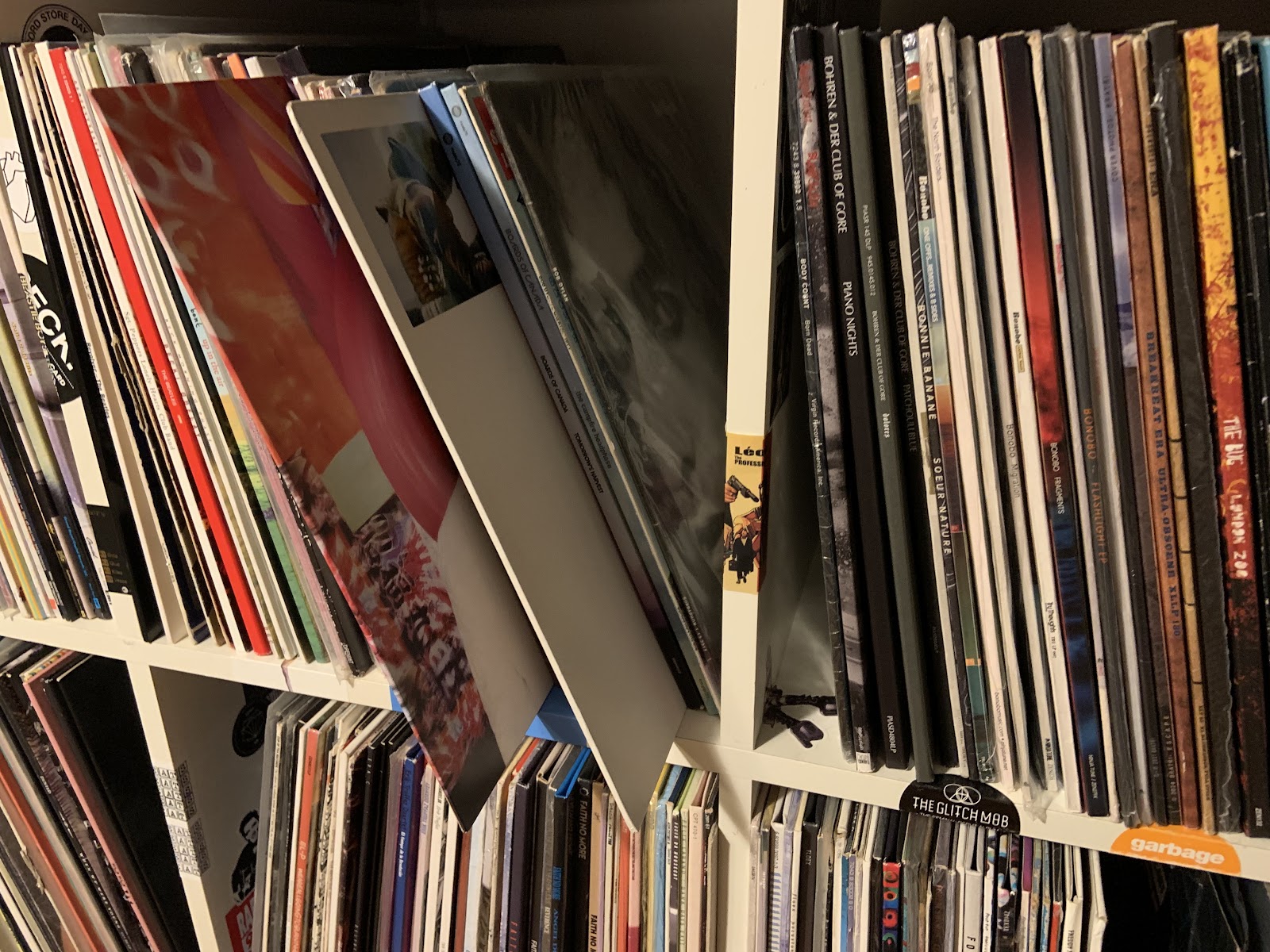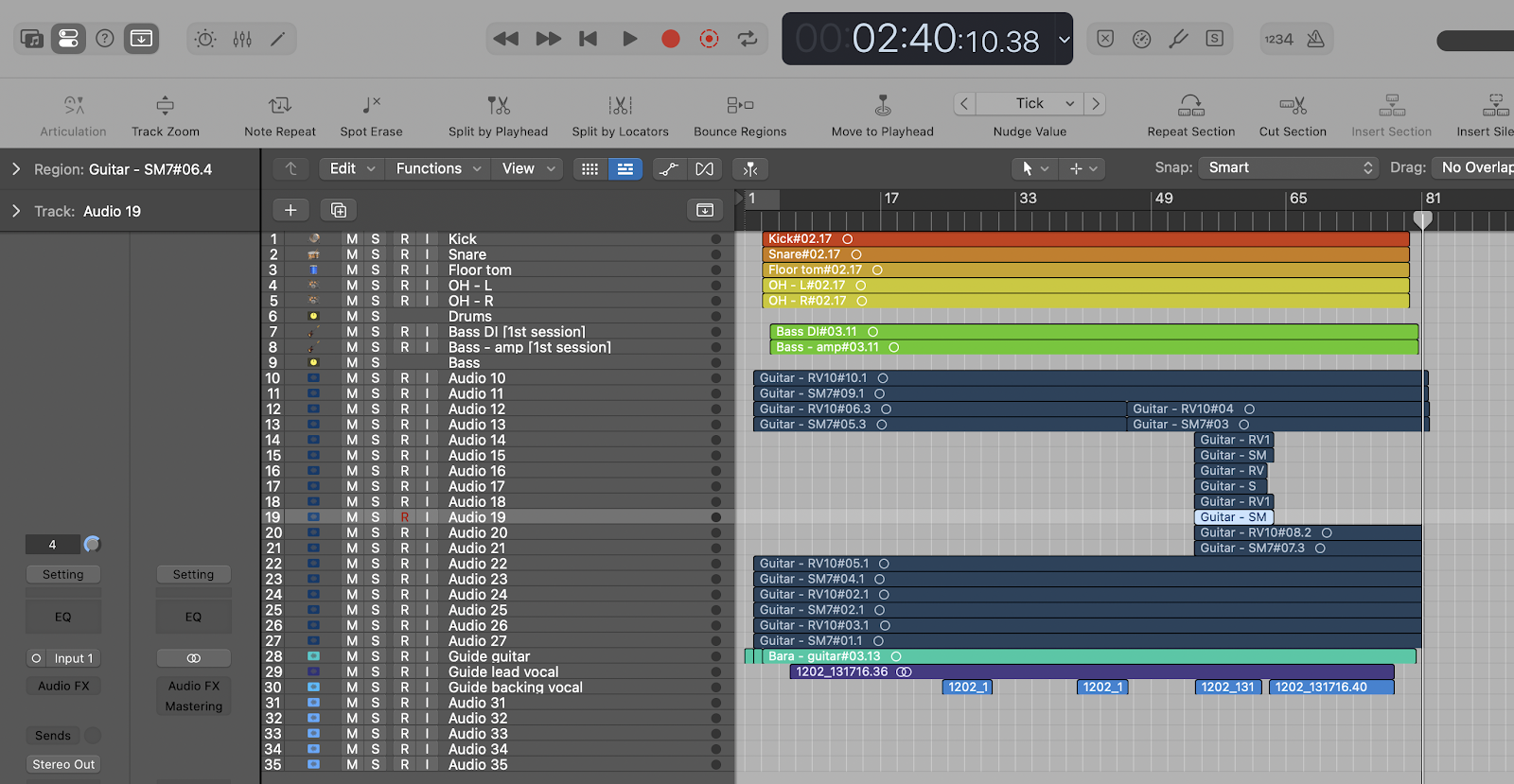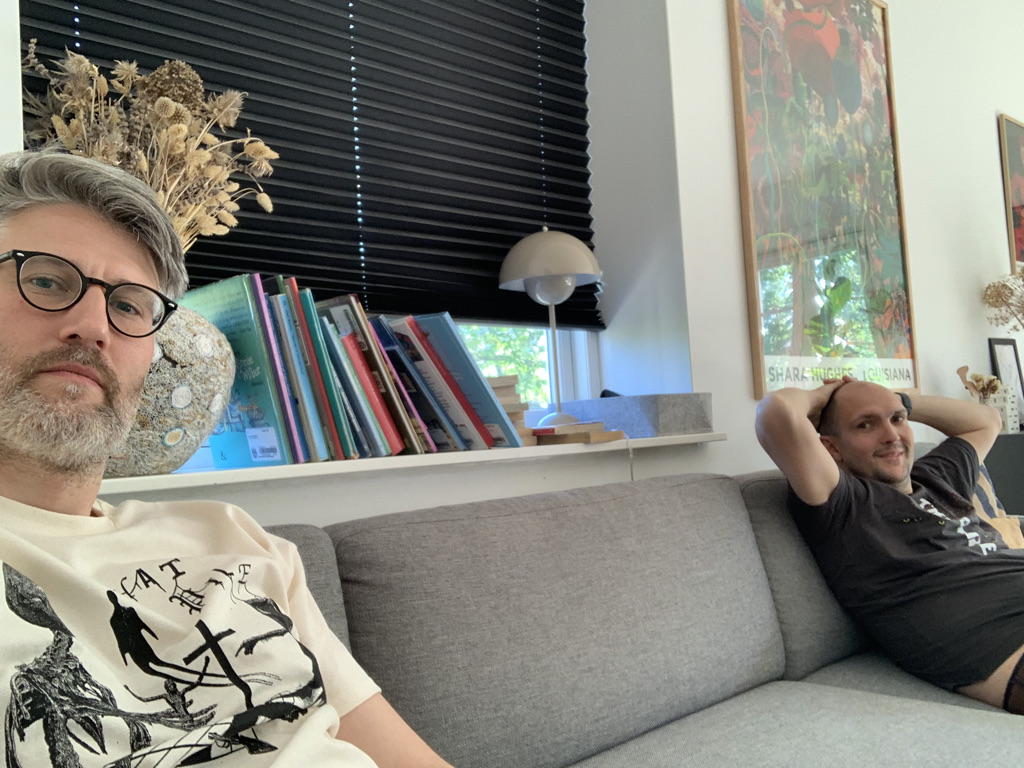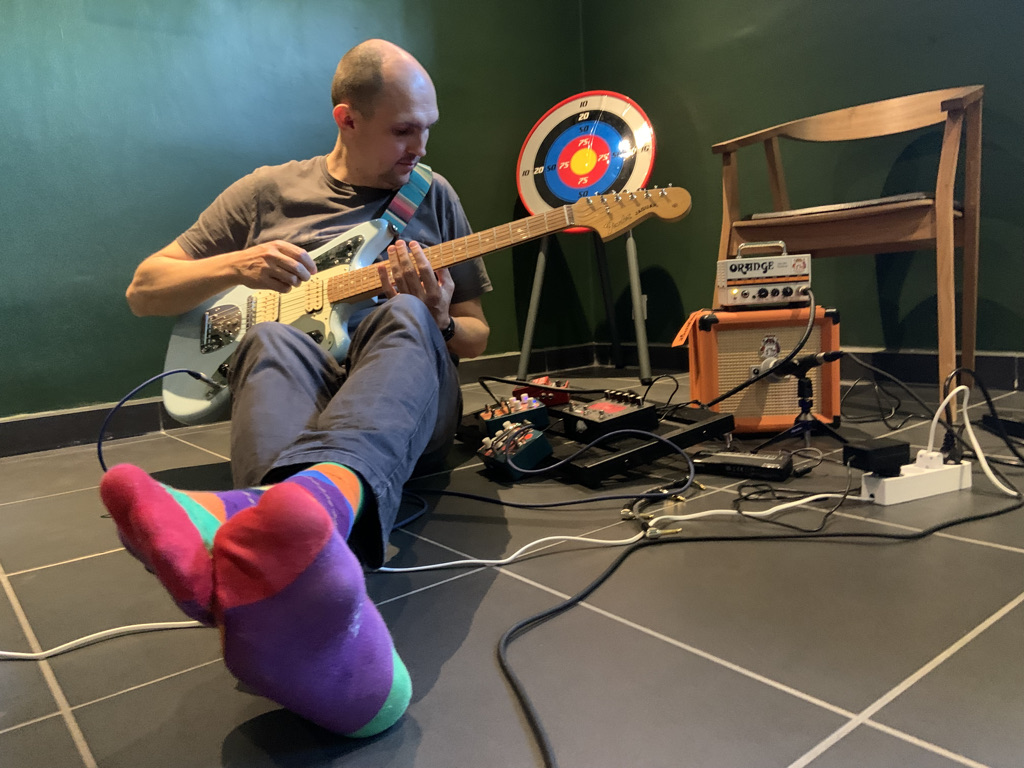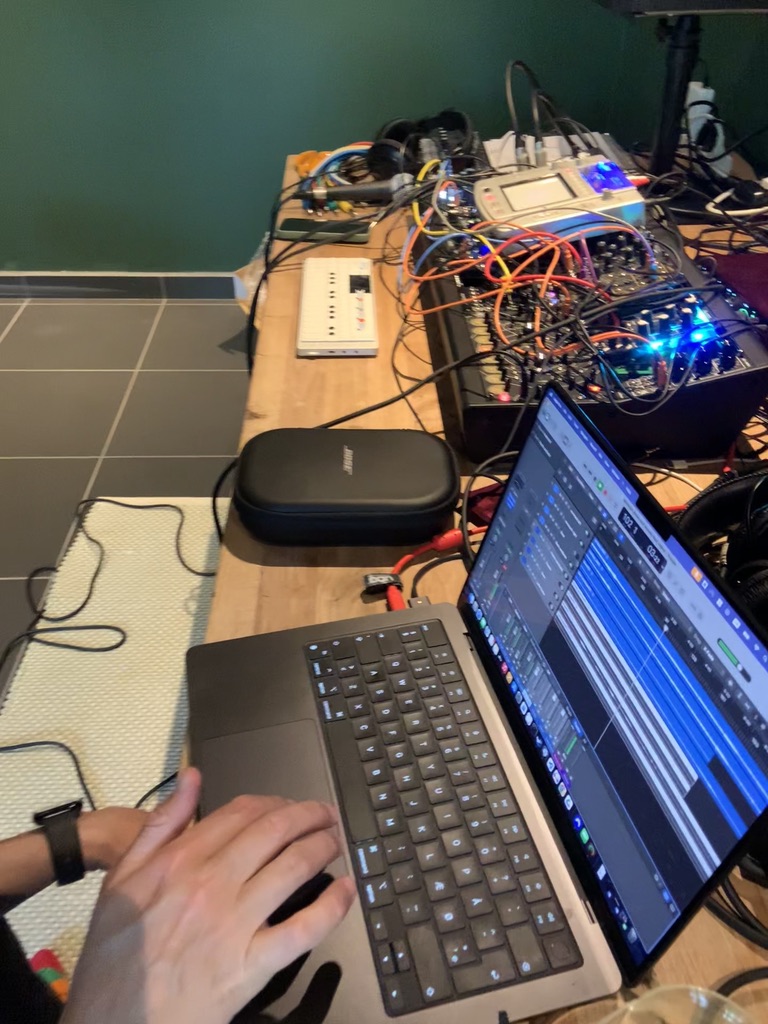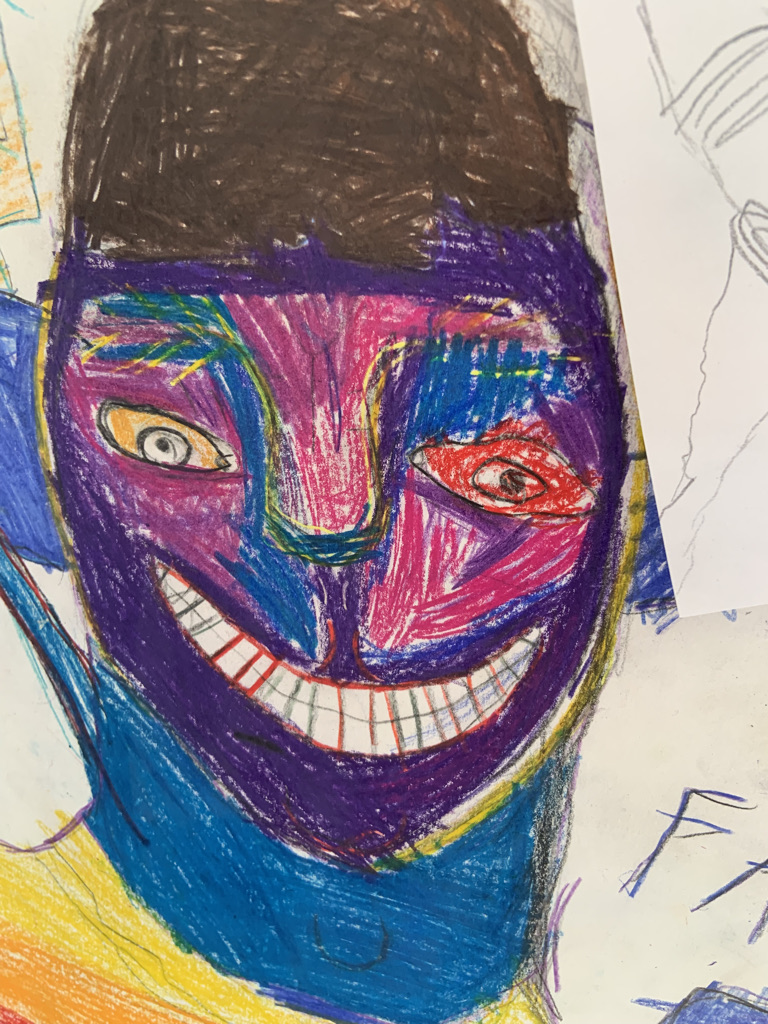Fumifigium, Nes & Jitters
Wednesday, June 25, 2025
Thursday, June 19, 2025
Sunday, June 15, 2025
Monday, June 09, 2025
Thursday, May 22, 2025
Blue Sreem Of Death - Copenhagen session [more pictures]
Monday, May 12, 2025
Thursday, May 01, 2025
Friday, April 18, 2025
The CCQs - live @ Potrva, Prague [23.11.24]
Written & performed by The CCQs.
Live sound by Michal Kočan.
Photo by Shyrooken instagram.com/shyrooken
The CCQs are:
Bára Dočkalová - acoustic guitar, vocals & keys
Andrew Gardiner - vocals & synth
Tomáš Holý - drums
Tomáš Obermajer - bass
credits
licens
The Essence of Sham - Sham [album & sleeve notes]
The process of writing and recording remained the same: improvised fragments were slowly refined into songs that - once recorded - were quickly forgotten. Long, rambling takes were then edited down at a later date to the results offered here. Several tracks from the debut album appear again, allowing the listener to decide which - if any - version is their favourite.
At times the guitar featured as many as four strings (although all still tuned to the same pitch as one another), demonstrating the group's desire to develop their sound. The partner of one of the members was so overawed by the results that - upon arriving home from a tiring business trip to hear the recordings booming through her kitchen at deafening volume - she immediately burst into tears and locked herself in the bathroom.
There can therefore be no doubt, then, that this is the true essence of Sham.
• • •
Andrew Gardiner - lead vocals, electric guitar, lyrics
Mark Warmington - drums, backing vocals
Recorded at Resident Studios, Willesden, London
Tracked between Spring - Winter 2016
Recorded, edited and mixed by Andrew Gardner ≈ unimbued.com
Cover image by Shyrooken ≈ instagram.com/shyrooken
credits
Up The Riz - Sham [album & sleeve notes]
The level of expertise on display was limited, since Mark had not played the drums in over ten years, and Andrew had never played the guitar before. The six-string in question belonged to Andy Warmington (Pond, My Attorney, Steve: From Fragment and Blue Screem of Death), and was upgraded to feature three - sometimes two - strings, which was put through the Resident Studios' Marshall 4x10 stack at maximum volume. This caused some consternation amongst the lads in the office, who were trying to run a respectable business.
Sessions were noisy affairs, often fuelled by green cans of Lech lager. Everything was improvised and spontaneously performed, eliciting some pieces that were possible to repeat... with the edited highlights of the live recordings forming the results of this collection.
Listeners should note that the opening and closing songs of Up The Riz feature in the band's sophomore effort as different, more evolved versions.
• • •
Andrew Gardiner - lead vocals, electric guitar, lyrics
Mark Warmington - drums, backing vocals
Recorded at Resident Studios, Willesden, London
Tracked between Spring 2014 - Winter 2015
Recorded, edited and mixed by Andrew Gardner ≈ unimbued.com
Cover image by Shyrooken ≈ instagram.com/shyrooken
credits
Email to Pavel [extract] - 16 Apr 2025, 09:52
I will return back to Prague with hand luggage filled with inexpensive Chinese microphones, made in the 2010s. They will be used for recording the overdubs for my Prague band's forthcoming homerecorded album.
the slide leads down with screws drilled in the sides of it
Soft Leisure Forever - album & sleeve notes
It soon snowballed into a much larger project that is now presented here: one that features lots of short-form, laptop-based pieces woven together to form a single continuous mix.
Some of the material here uses samples taken from other projects I have worked on in recent years, including Future Loss, My Attorney and Sham.
In the cases of 'Gmm Mr' and 'PO Box', different versions appear on my previous release 'Mustek', which is available here: unimbued.bandcamp.com/album/mustek-2
The hope is to provide a soundtrack to the rather tumultuous and fractured nature of pandemic living, during which this was made.
• • •
Everything by Andrew Gardiner ≈ unimbued.com
Recorded at Colerabbey Studios in Prague, Czech Republic
Tracked between Spring 2020 - Summer 2021
Cover image by Shyrooken ≈ instagram.com/shyrooken
• • •
Tracklisting
1. Jam Piece - FP1mEXTRACTION ALT2
2. Mike's Beat - RAF1
3. Video Game Documentary - SLOWD1
4. Land Of Kings - voice&guitar [blip] [Dec16]
5. PO Box2 - rmx2heartbeat - EXTRACTION TYPE3newSLOOW - FP1
6. Riff - FP2
7. Pulse - loop2
8. Vinyl Beat [Prague edit] [bent1] - FP1
9. SynthTime3 - RAF1
10. Ambient Album Mashup - Edit3 - WIP1
11. Each One Worse Than The Last - FP3mPITCHSLOWdeclicked
12. Ambient Works3 - unimbued mix - FP1m [edit]
13. Audio Unit Experiment - FP3 - SLOWdeclick
14. Click2FIDDLEFREE - FP1_1
15. SoftSynthClick8 - RAF1
16. loopy keyboard blip
17. Finger Tap - June 2016
18. Gmm Mr - FP6m - SECTION B ONLY
19. TIE Fighter - FP1deverb
20. Synth
• • •
Guest Appearances
Jam Piece: Brian Magee - electric guitar, Michael Farrelly - drums
Mike's Beat - Brian Magee - electric guitar, Michael Farrelly - drums
PO Box: Stuart Stone - drums
Riff: Michael Farrelly - drums
Click2FIDDLEFREE & SoftSynthClick8: Ryan Fleming - guitar
• • •
Songwriting Credits
TIE Fighter: uses a MIDI score composed by Clint Bajakian, for the 1994 PC CD-ROM video game 'Tie Fighter'
Gmm Mr: uses samples from 'Gimme More' by Britney Spears & 'The Beginning Of An End' by Spectres, available here: wearespectres.bandcamp.com/track/the-beginning-of-an-end
credits
Friday, February 02, 2024
Tuesday, December 29, 2020
Mustek - full sleeve notes
During this time of transition, I continued to sketch very slight compositions using a wide variety of source material that happened to cross my desk at the time.
These included a recording of a classical string quartet concert that I had attended in Belfast, some drum and guitar samples I had recorded during rehearsals for my punk side project Sham (based in London, with friend Mark Warmington), field recordings of dogs barking and metal sculptures being thrummed, extracts from Future Loss sessions that were bent into textures, demo recordings taken when testing certain pieces of studio equipment, and remixes of existing material using the source stems (for songs by Britney Spears and My Attorney).
All of which yielded quite an esoteric and loose collection of music!
I have attempted to present the material in the way one might sequence a mixtape: with plenty of sharp contrasts in genre, and embracing the random nature of some of the music.
Tuesday, December 22, 2020
No Days Off Forever - full sleeve notes
Tracks include the now-familiar hallmarks of my music from this period: a blend of ambient samples from the city, heavily programmed delay patches, mixed with old snippets of piano from the church studio, as well as new compositions that were done using Ella's piano in Kew Gardens. There is also a soundtrack for a short film that was never used by the people who commissioned it, and has instead found a home here.
This marks the end of music I made while living in London, and after this I would return to Portrush to collect much of the material together, and refine it during the start of 2017.
Swazzi Hold
I honestly have no idea how this was made. I think it was part of a much bigger piece, which was then discarded. The audio was then put through a filter which cut off much of the signal if it dipped below a certain frequency, giving it this amputated, incomplete feel.
London - December 2
Samples here include tenants in the pub accommodation I lived in waking me up at night by singing Bible songs, an exhibit in the Tate Modern that featured some audio, recorded conversations that were heavily bitcrushed, all of which were put through the Delay Designer. I will never grow tired of the ways a single natural piano take can be manipulated and played with until it sounds otherworldly and orchestral.
Day 84
The title comes from a period in mid-2014, when I worked for eighty-four consecutive days without a day off. This included teaching English and working 24 hour weekends in a particularly wretched pub in Richmond.
The material used here is another exercise in using stock material from Logic’s library, adding it to piano from the church, and trying to see if anything interesting comes from it.
The preset bass guitar was pitch shifted down extra low, to create a woody-sounding effect, and not at all like it was from a library bin. I was pleased to finally include the cello scraping sound that Sarah Gill recorded when I was taping the Rebecca Jones overdub sessions in 2007. The piano from the church (intentionally operating in triplets compared to everything else, which is in 4/4) was double tracked through a pitch shifter, which created new, uneasy harmonies.
B-Movie Drop Out [suite]
This was the rejected soundtrack for the follow-up to the fashion film, which can be read about more here.
It used Stuart’s glockenspiel from the My Attorney LP5 session, the old Farfisa organ from the church, as well as piano from the church and a recycled Four Lane Ends Metro station sample.
The edits are in odd places: this was because I was working to the cuts of the moving image. In total, the film demanded three distinct bits, with music for the credits - so these four components make up the “suite”.
MIA Sri
I came across smartphone video footage of a Sri Lankian dance routine one night on YouTube, and tried to manipulate it into something that resembled the chaotic and colourful rhythms of M.I.A.’s songs.
Leyborne Park Love Scene
The audio book of Carrie Fisher’s memoirs came out just after her death, and it was fascinating to hear tales of my favourite on-screen heroes having a genuine romance behind the scenes. It seemed for a moment to make the original Star Wars film as real as it had been in my childhood imagination.
I used a sample of it to accompany a piano moment I had recorded in the Kew Gardens address of the song title. It was put through Logic’s Ringshifter - a powerful tool that can bend anything until it’s virtually unreconisable from its original state.
End Sequence
This is more of Ella’s piano, heavily processed. I had the closing moments of some epic video game in mind, listening back to this. Living in London for me always had a video game element to it: staying one step ahead of the sudden drop, with no extra lives. “Your Princess Is In Another Castle”.














